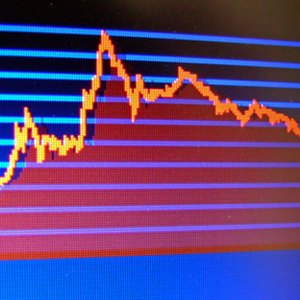
A reverse stock split occurs when a company decides to decrease the number of shares in order to increase the dollar value of the individual shares. For example, a company that has $100,000 worth of outstanding shares, with 5,000 shares at $20 per share, may elect to create 2,500 shares at $40 per share. There are a number of pros and cons associated with this type of pricing strategy.
Attracting Investors
According to the BuyandHold investment website, a potential benefit of a reverse stock split is that it can create the perception that a company's stock has increased in value. Because the share price increases, it may look more attractive to potential investors, resulting in more investment dollars for the company.
Preventing Delisting
A reverse stock split can prevent a company from being removed from one of the stock exchanges. Depending on the exchange, if the stock value drops below a certain price, it is in danger of being delisted. By executing a reverse split, the price of the stock automatically increases and keep the company as an active member of the exchange.
Matching Competitors
A company may choose to do a reverse split to keep it in more in line with the share price of its main competitors so that its stock does not appear less valuable. According to TheStreet website, this can give a psychological boost to the company and its investors, especially if the company has been experiencing hard times.
Negative Event
A downside to the reverse split is that while a company may attempt to pass it off as a positive event, in reality, it is usually just the opposite. Companies whose stock price has been decreasing for an extended period of time may execute the split in an attempt to "cover up" this fact. In reality, it may be a sign that the company is in poor financial health.
Investor Displeasure
TheStreet also indicates that retail investors typically do not like to see the number of shares they own decrease, even though the total dollar value of the stocks does not change. It cites Citigroup as an example, saying that its investors would rather buy 100 shares of a $5 stock than five shares of a $100 stock.
References
- TheStreet: Contemplating Reverse Split
- U.S. Securities and Exchange Commission. "Reverse Stock Splits." Accessed Aug. 16, 2020.
- U.S. Securities and Exchange Commission. "Self-Regulatory Organizations; The Nasdaq Stock Market LLC; Order Approving a Proposed Rule Change to Modify the Delisting Process for Securities with a Bid Price at or Below $0.10 and for Securities that Have Had One or More Reverse Stock Splits with a Cumulative Ratio of 250 Shares or More to One over the Prior Two-Year Period," Page 9. Accessed Aug. 16, 2020.
- IDEAS. "Thirty Years of Canadian Evidence on Stock Splits, Reverse Stock Splits, and Stock Dividends." Accessed Aug. 16, 2020.
Writer Bio
Chris Joseph writes for websites and online publications, covering business and technology. He holds a Bachelor of Science in marketing from York College of Pennsylvania.

